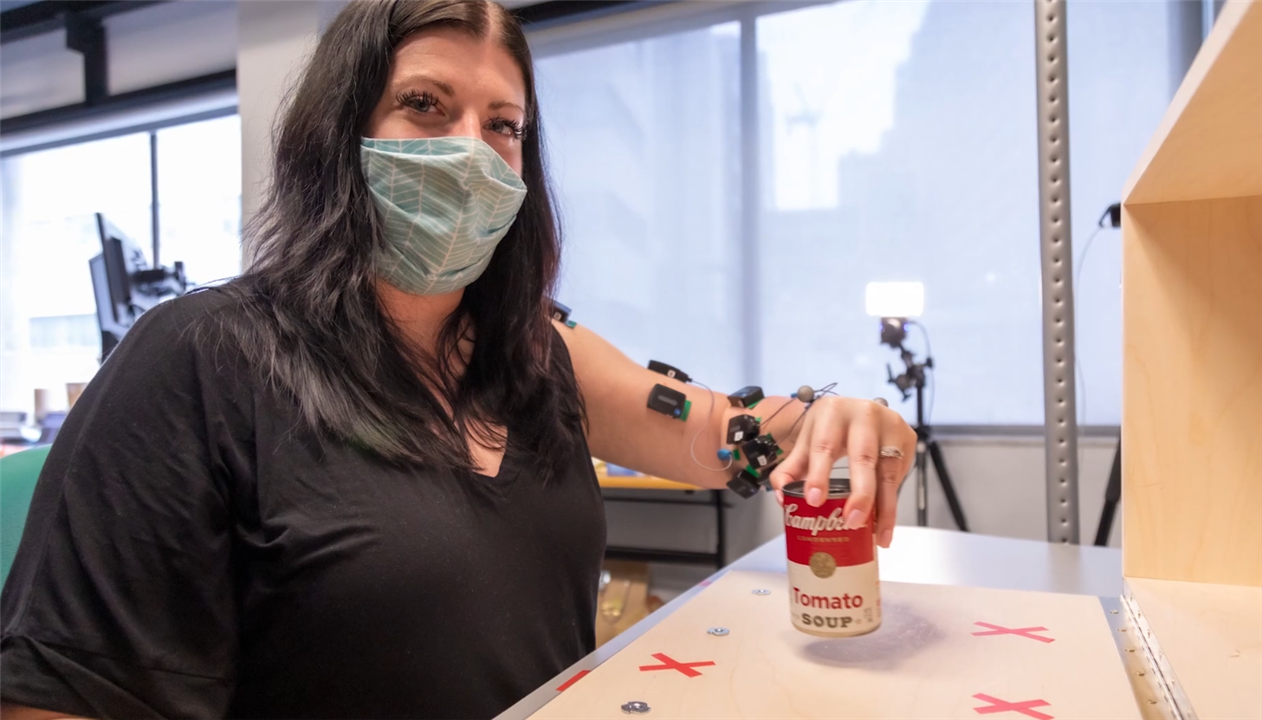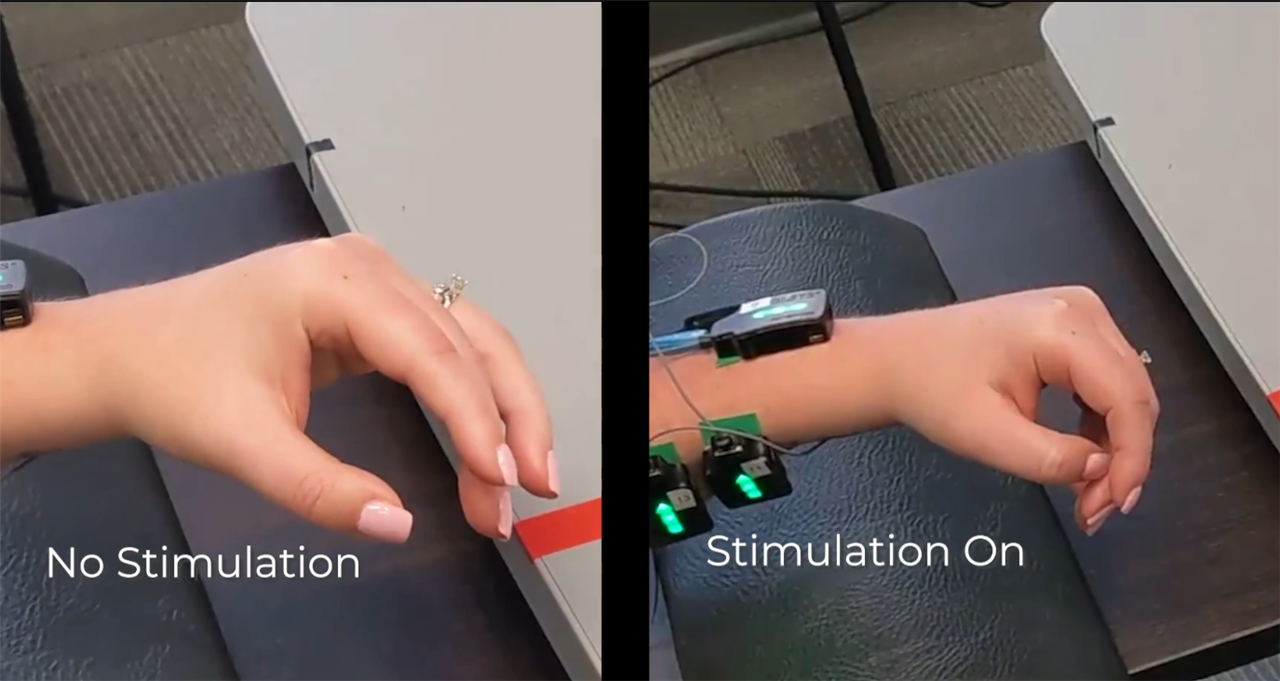
33-year-old stroke victim Heather Rendulic lifted a can of soup with the help of the implanted electrode. (Image Credit: Tim Betler, UPMC and University of Pittsburgh Health Sciences)
An electrode distributing electrical pulses to a specific area on the spine allowed two stroke victims to regain movement of their disabled arm and hand. This could positively impact hundreds of thousands of patients who were left paralyzed in some way from a stroke. However, these results still need to be reproduced in a larger study, and it’s not yet known which stroke patients could benefit the most from this treatment.
One of the patients, 33-year-old Heather Rendulic, had a life-changing experience with this treatment. Malformed blood vessels in her brain caused her to suffer a series of strokes in 2011. But the last one paralyzed her entire left side. Surgeons then successfully removed the stroke-inducing blood vessels. Afterward, it took nearly two years for Rendulic to walk without help. Later on, she managed to move her hand and arm slightly. She could only close her hand.
After nearly a decade, Rendulic participated in the University of Pittsburgh’s study. In her case, researchers know the brain attempts to deliver signals to her arm and hand-controlling muscles. Unfortunately, these signals are too weak to have an impact. The team wanted to pick up those weak signals and convert them into functional outputs, allowing a patient to control their hand.
They achieved this by sending electrical pulses to the spine’s nerve cells. Applying those pulses causes the nerve cells to respond better, allowing the brain signals to travel through the muscles they control. Placing the electrodes inside the spinal cord drives the excitability toward the required area. Rendulic became the first person to undergo this treatment. Using a large needle, the surgeon injected the electrode into her spine. The team then activated the stimulation, allowing Rendulic to open her hand in certain ways she wasn’t able to for ten years.

Activating and deactivating the implanted electrode strengthens and weakens the effects, respectively. (Image Credit: Tim Betler, UPMC and University of Pittsburgh Health Sciences)
Additionally, the pulses enhanced her ability to determine the position of her arm and hand without looking at them, which occurs from proprioception. The simulation provided stronger effects while each patient had the electrode implanted for four weeks. When they deactivated the simulation, the effects weakened without disappearing. This indicates the pulses cause changes in the circuits responsible for controlling the hand and arm.
Researchers removed the electrodes when the four-week study ended. They plan on developing a permanently implantable system. It usually takes years to make the technology ready for widespread use. On a positive note, this could be a faster process because the Food and Drug Administration has already approved this device for those with chronic pain.
Have a story tip? Message me at: http://twitter.com/Cabe_Atwell
